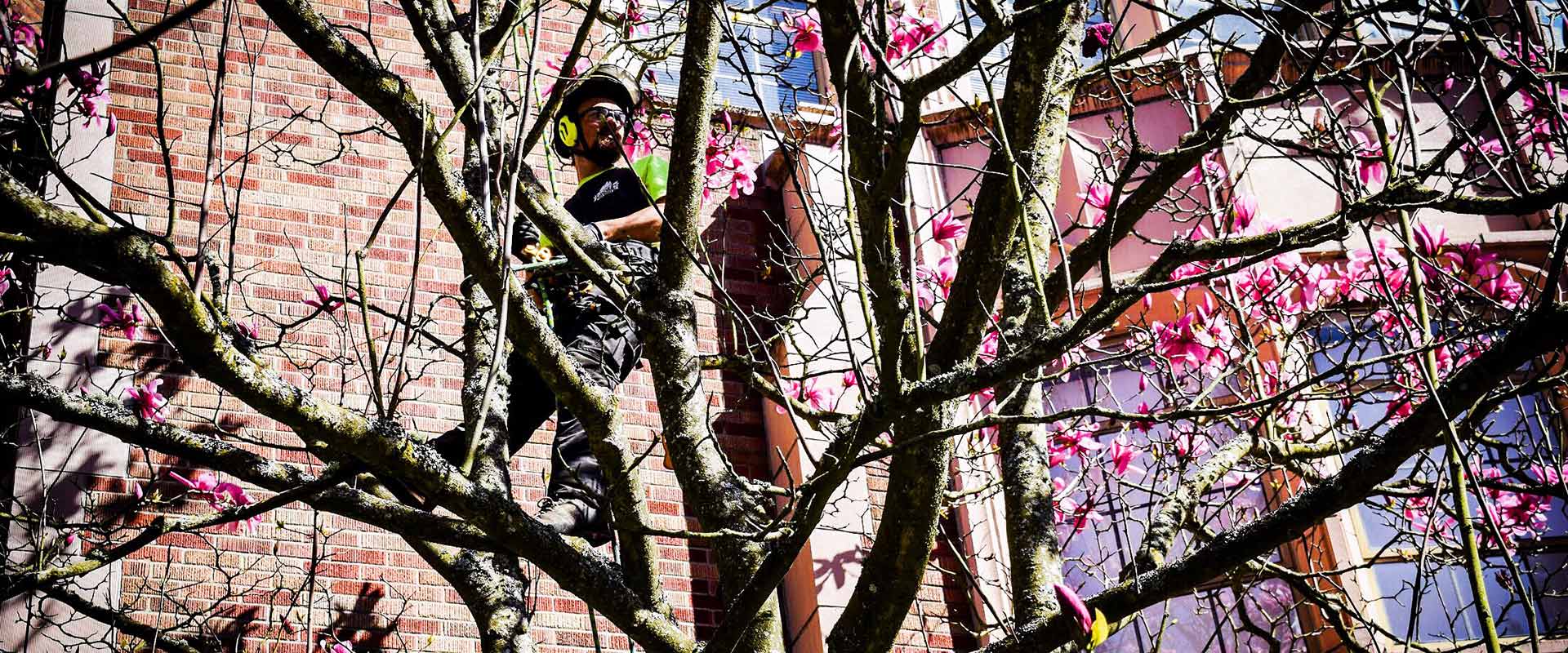Trees are the main points of interest whenever we picture beautiful landscapes and lush greenery. They provide shade and create a serene ambiance while serving as essential sentinels for safeguarding the environment. To ensure that trees thrive and continue to enhance our surroundings, regular tree trimming plays a vital role.
Whether you are a homeowner, a business owner or simply a nature lover, understanding the benefits of regular tree trimming is crucial. By gaining insight into the positive outcomes this practice brings, you can make informed decisions about the care and maintenance of the trees in your surroundings.
What Is Tree Trimming?
Tree trimming, also known as tree pruning, is a process that involves selectively removing specific branches or portions of a tree. Professional arborists typically perform this task, as they possess the appropriate knowledge, skills and specialized tools required for the job.
These experts understand the science behind tree growth patterns and know how to make precise cuts that promote healthy redevelopments.
Types of Tree Trimming Techniques
There are various types of pruning techniques employed, depending on the desired outcomes and the specific needs of the tree. Some of the most common methods include:
- Crown cleaning: This involves the removal of dead, dying or diseased branches from the tree’s canopy.
- Crown thinning: In this technique, selected branches within the tree’s canopy are carefully pruned to reduce density.
- Crown raising: This means removing lower branches to increase the clearance between the tree’s canopy and the ground.
- Crown reduction: This involves trimming back the outermost branches to reduce the overall size and weight of the tree while maintaining its natural shape.
- Vista pruning: This practice is commonly done to enhance views or create sightlines.
Tree trimming in Seattle is typically performed during the tree’s dormant season, which varies depending on the species and the climate. However, dead, hazardous, or diseased branches must be removed at any time of the year to prevent potential risks.
Seattle Tree Pruning Advantages
Tree pruning is not just about shaping or removing branches; it is a strategic process that promotes the overall well-being of trees. Below, we will delve deeper into each of the advantages, so property owners can fully embrace this practice as an investment in their landscape’s long-term safety and beauty.
Enhances Tree Health
Regular pruning plays a crucial role in maintaining the vitality of trees. By removing dead, diseased, or damaged branches, trimming prevents further decay and the potential spread of diseases or pests. In addition, pruning also improves airflow and sunlight penetration throughout the tree’s canopy, promoting more robust growth and reducing the risk of fungal infections.
Safety and Risk Mitigation
Over time, trees can develop weak or structurally unsound branches that pose a risk of falling during storms or high winds. By identifying and removing potentially unsafe limbs, landowners can significantly minimize the chances of property damage, personal injury, or accidents caused by falling branches. Pruning also helps maintain a clear line of sight for drivers and pedestrians, preventing any obstruction that could lead to traffic disasters.
Aesthetics and Landscape Appeal
Well-maintained trees significantly contribute to the visual appeal of a landscape. Regular tree trimming allows for shaping and grooming, creating visually pleasing forms and symmetry. Also, trimming can help control excessive growth, ensuring that trees remain proportioned to their surroundings.
By maintaining a neat and well-manicured appearance, pruned trees enhance the overall aesthetic appeal of residential and commercial properties, therefore increasing their value and curb appeal.
Encourages Fruit Production and Flowering
Strategic pruning redirects the tree’s nutrients to essential areas, allowing it to allocate resources more efficiently. This is highly beneficial for fruit-bearing and flowering trees. In addition, trimming helps remove overcrowded branches, allowing sunlight to reach the inner parts of the structure, encouraging bud development, and boosting the yield of fruits or vibrant blooms. Through regular pruning, homeowners and orchard growers can enjoy bountiful harvests and stunning floral displays.
Environmental Benefits
Properly maintained trees contribute to carbon sequestration, helping mitigate climate change by absorbing and storing carbon dioxide from the atmosphere. Also, pruning improves the health of urban forests by reducing the risk of tree-related disasters, such as wildfires.
Lastly, well-trimmed trees promote air circulation and reduce the chances of branches coming into contact with power lines, thereby minimizing the risk of electrical hazards.
Conclusion
Tree trimming represents a proactive commitment to your land’s safety and aesthetic appeal. When property owners recognize the advantages associated with this crucial practice, they can make informed choices regarding the maintenance and care of their trees.
Don’t overlook the importance of regular tree trimming and seek the services of professional arborists. They have the knowledge, skills and experience to perform the necessary techniques most efficiently and effectively.
Eastside Tree Works can assist if you need professional solutions in the Seattle area. With our commitment to excellence, we prioritize the health and well-being of your trees while ensuring that they complement your landscape visuals.
Whether you need maintenance trimming or tree removal with a crane, our professionals will assess your specific requirements and provide tailored solutions. Contact us today!

